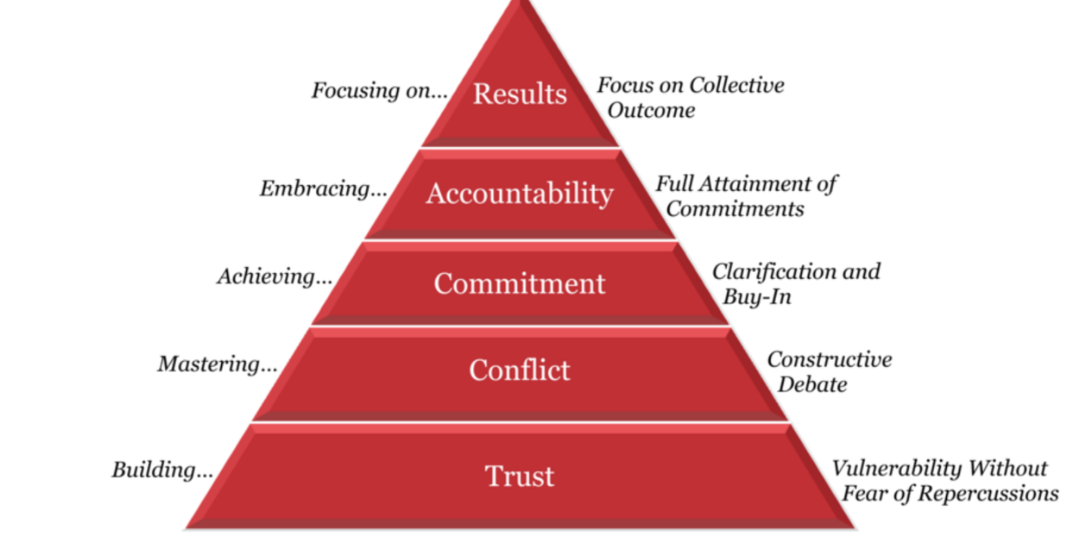In any organisation, the most important asset is its staff. For you as a leader, your asset therefore is your team. They need you to nurture, empower, support, recognize and acknowledge them. Patrick Lencioni’s model for effective teams is shown below in a pyramid. He explains that the foundation for an effective team is trust.
Effective teams are:
• More effective and efficient
• Make better, faster decisions
• Tap into the skills and opinions of all members
• Avoid wasting time and energy on politics, confusion and destructive conflict
• Work together with greater levels of respect
• Create a competitive advantage
• Have more fun while being more productive
How as a new leader do you build a high-trust team?
This trust needs to be not only in your leadership but also between each team member. If you role model how to build trust in your relationship with each team member, it will ripple out across the team.
Below are five key ways you can start to develop the trust of your team in your leadership.
1. Involve the team in decision-making – if you seek out their opinions and involve them in decisions, they will have greater ownership of the decision and direction. The team will work better together with a stronger sense of unity.
2. Allow people to do their job. Give your staff the autonomy to carry out their job well. It is important to delegate to them to build their skill level and make sure you do not micro-manage.
3. If you make a mistake, admit it. If your staff make a mistake, thank them for their honesty in sharing the error with you and together explore the learning from the experience. Exploring new things and being innovative are going to come with some mistakes. This is how we learn and grow.
4. When one of your team come to you for advice, allow them to explore the problem with you before giving any advice. Use the coaching style of questioning to help them explore the options available to them. You will be building their resilience, keeping them accountable for the solution and building their capacity at the same time.
5. Know your team members – learn about your team members. Are they quiet, or talkers? Are they deep-thinkers or designers? Knowing their styles will help you to manage your team when they are all together and assist you to know how you need to be with each one. Be interested in your team members in terms of their challenges, their strengths, their passions and their ideal futures. Get to know their stories and their home settings.
Trust is fundamental to an effective team. It takes time to develop and a consistent approach. As the pyramid model shows all other aspects rely on trust being present. If trust disappears the pyramid collapses. (Model reference: Patrick Lencioni, Five Dysfunctions of a Team.)
Written by Janine Stratford, Leadership Coach, Coach-Trainer, Career Strategist and Founder of Coaching Focus.
The Elevating Leadership Program – Module 1: Define your Leadership Style, explores behavioural preferences in depth. Apart from finding out your own behavioural style, you will start to understand the characteristics of the other behavioural preferences and how they can show up in conversation, through the structure of their email, even by observing a colleague’s desk or office or how they dress. It’s fascinating! Once you know what to look for, you can then identify a person’s style quite quickly and the process of getting to know them and developing a working relationship is so much easier.
You can learn more about the Elevating Leadership Program ,specifically Module 1 HERE.







